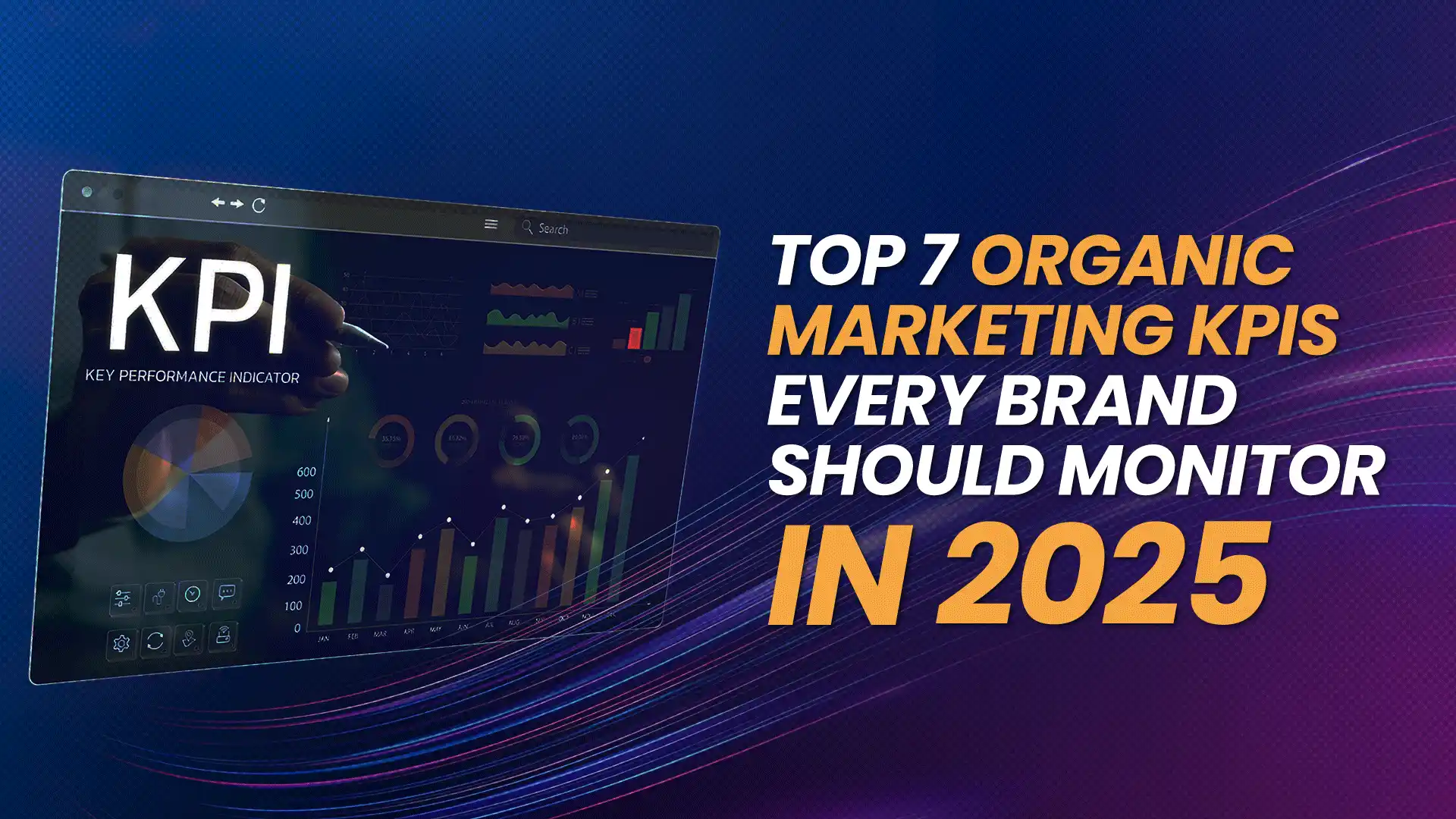In 2025’s digital world, organic marketing has become a key way for brands to connect with their audience in a real way. Unlike paid ads, organic marketing is built on honest conversations and helpful material that draw people in and keep them interested. To succeed, brands need to watch certain Key Performance Indicators (KPIs) that show how well their organic efforts are working. Below are seven organic marketing KPIs every brand must track this year.
1. Organic Traffic Growth
Organic traffic is the number of visitors who arrive on your site through unpaid search results. Tracking this metric shows whether your SEO tactics and content plan are working. When you see steady growth, it means your content is hitting the mark and your site is becoming more visible.
Things to Keep in Mind while Monitoring Organic Traffic Growth:
- Use a tool like Google Analytics to see how organic sessions change over time.
- Find out which pages or keywords bring in the most visitors.
- Look at traffic sources to get a clear picture of where your audience is coming from.
2. Keyword Rankings
Keeping an eye on where your site ranks for important keywords gives insight into your SEO health. Higher rankings usually bring more visibility and clicks. Checking keyword positions often helps you spot chances to tweak and improve your content.
Things to Keep in Mind while Tracking Keyword Rankings:
- Focus on both popular keywords and longer, specific phrases tied to your niche.
- Use tools like SEMrush or Ahrefs to track keyword movements.
- Update your content plan when your keyword ranks improve or drop.
3. Click-Through Rate (CTR)
CTR shows the share of users who click your link after seeing it in search results. A higher CTR means your titles and descriptions are appealing and match what people search for. Boosting CTR can increase site visits without moving up in rankings.
Things to Keep in Mind while Monitoring Click Through Rate:
- Write clear and interesting meta titles and descriptions.
- Add relevant keywords so your listing matches what users expect.
- Trying different headlines can be a great way to determine which ones get more clicks.
4. Engagement Rate
Engagement rate measures how much users interact with your material—likes, shares, comments, and time spent on a page. When your audience frequently interacts with your content, it shows they find it meaningful and worth their time. It’s a strong sign that your content quality is good.
Things to Keep in Mind while Tracking Engagement Rate:
- Track session length and pages per session to gauge visitor interest.
- Include calls-to-action and interactive elements to invite user participation.
- Review which types of content get the most interaction and focus on those.
5. Bounce Rate
Bounce rate reflects how many users exit your website without exploring beyond the first page they land on. A high bounce rate suggests that your content may not align with user expectations, or that the site experience requires improvement. Lowering this rate can help keep visitors on your site longer and improve SEO.
Things to Keep in Mind while Monitoring Bounce Rate:
- Ensure your content matches the keywords people are using to find information.
- Speed up page loads and ensure your site works well on mobile devices.
- Ensure visitors’ seamless and convenient experience by providing easy navigation and links to other relevant pages.
6. Customer Lifetime Value (CLV)
Customer lifetime value reflects the total income a business can earn from one customer over the entire period they stay connected. Knowing this figure helps you plan better retention strategies by focusing on long-term value through organic marketing.
Things to Keep in Mind while tracking or monitoring CLV:
- Categorise customers by their past purchases and behaviour to tailor your efforts.
- Set up loyalty or reward programs that encourage repeat buying.
- Use CLV figures to guide what kind of content you create and how you engage users.
7. Conversion Rate
Conversion rate shows the percentage of visitors who take a desired action—buy something, sign up for emails, or fill out a form. Watching this metric tells you how well your website and content turn visitors into customers.
Things to Keep in Mind while Monitoring Conversion Rate:
- Set specific criteria to determine what actions qualify as a successful conversion.
- Keep landing pages simple and clear so users know what to do next.
- Run A/B tests on different page elements (like buttons or headlines) to find what works best.
By keeping these seven KPIs in view, brands can learn exactly how their organic marketing is performing. Regularly checking these numbers and tweaking your approach will lead to stronger strategies, happier audiences, and better returns. In 2025’s fast-moving digital space, paying attention to these indicators is crucial for long-term growth and success.
FAQ’s
Why are organic marketing KPIs important in 2025?
Organic marketing KPIs help brands measure how well their unpaid efforts are performing. In 2025, with search algorithms and user behaviours evolving, tracking these KPIs ensures you stay aligned with what your audience expects and what platforms prioritise.
Which KPI should a new brand focus on first?
For a new brand, focusing on organic traffic growth is essential. It shows how many people are finding your site naturally, and it gives a clear signal that your content and SEO are starting to work.
How often should I check my organic marketing KPIs?
It’s best to monitor your KPIs weekly or monthly, depending on your campaign size. Frequent checks allow you to spot trends, fix problems early, and make informed adjustments to your strategy.
Can strong KPIs lead to higher sales without ads?
Yes, when your organic KPIs are strong—like high engagement, better rankings, and low bounce rates—you attract and retain more users.

